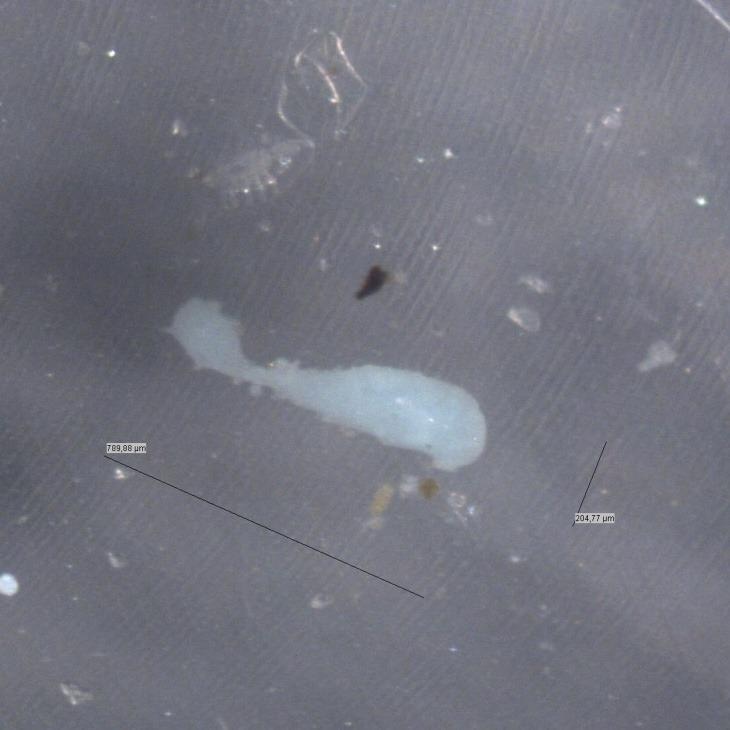Microplastics are capable of accumulating environmental organic pollutants and transferring them. However, their ability to transport metals through the same means is something new.
 The smaller the plastic particles are, the larger the harmful cargo they can carry, which is invisible to the eye: Microplastics transport harmful metals in the environment and release them under certain conditions. Image Credit: Hereon/Inorganic Environmental Chemistry.
The smaller the plastic particles are, the larger the harmful cargo they can carry, which is invisible to the eye: Microplastics transport harmful metals in the environment and release them under certain conditions. Image Credit: Hereon/Inorganic Environmental Chemistry.
Researchers at the Helmholtz-Zentrum Hereon showed that smaller plastic particles could accumulate metals more, where the smaller the plastic particles, the greater their metal accumulation ability. The findings have been reported in the Journal of Hazardous Materials Letters.
Researchers across the world have already revealed the overwhelming ecological prevalence and longevity of plastic particles. These particles are sized between 1 μm and 0.5 cm. The particles are formed when bigger plastic components break apart in the sea or wind up in the rivers and eventually in the ocean directly from wastewater arising from the land.
Microplastics in very high concentrations are toxic. Additionally, they also transport, accumulate and release other pollutants. Even when data on organic pollutants have already been published, there is only a little understanding of the interactions between the microplastic particles floating in the water and dissolved metals.
Researchers from the Institute of Coastal Environmental Chemistry at the Helmholtz-Zentrum Hereon systematically analyzed the interactions in the laboratory.
The researchers, including first author Dr. Lars Hildebrandt, analyzed the accumulation of 55 different metals and semi-metals on polyethylene and polyethylene terephthalate particles, measuring 63–250 μm in size.
In regard to water polluted by plastics, the two types of plastics we studied play a vital role. This is due to their wide range of application and the associated high production volumes. Most shopping bags, for example, are made of polyethylene (recycling code 4, LDPE), and plastic drinking bottles are almost without exception made of polyethylene terephthalate (recycling code 1, PET).
Dr Lars Hildebrandt, Study First Author and Environmental Chemist, Helmholtz-Zentrum Hereon
Dr Daniel Pröfrock, a Study Co-Author at Helmholtz-Zentrum Hereon said, "In the study, we determined that the accumulation becomes stronger when the particles become smaller and that there are significant differences between the various elements (metals and semi-metals) in terms of the extent of enrichment."
Certain metals like iron, tin, chromium, or, more specifically, their ions, along with rare earth metals, bind themselves almost entirely to the microplastics. Others like zinc, copper, and cadmium exhibited almost no accumulation on the plastic over the entire test period. Moreover, the polyethylene particles exhibited substantially greater accumulation than the polyethylene terephthalate particles.
During the second phase of the experiment, the Hereon researchers demonstrated that the particles loaded with metals or semi-metals almost completely rereleased the respective metal contents under chemical conditions, like those present in the digestive tract.
Our test set-up in the laboratory was actually simplified and without model organisms. Nonetheless, the results provide important evidence that microplastic particles, when absorbed by the body, act as a type of trojan horse for metals and that these metals can possibly be introduced into organisms to a greater extent in that way.
Dr Lars Hildebrandt, Study First Author and Environmental Chemist, Helmholtz-Zentrum Hereon
Scientists are carrying out further research to identify the behavior of other plastics frequently found in the environment and the influence of the age of the particles and their weathering state on the accumulation and release processes.
Journal Reference:
Hildebrandt, L., et al. (2021) Microplastics as a Trojan horse for trace metals. Journal of Hazardous Materials Letters. doi.org/10.1016/j.hazl.2021.100035.